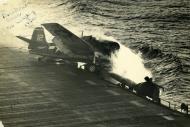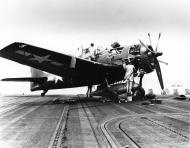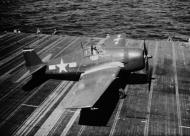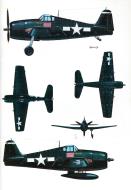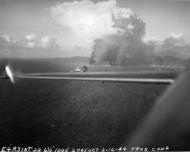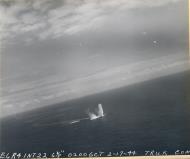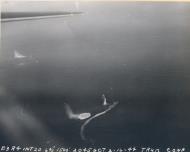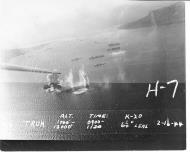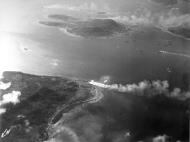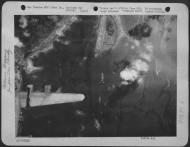Aircrew USN future ace Ensign David S McCampbell during flight training at NAS Pensacola Florida 1937 01
CAG 15 Hellcat BuNo 70143 Dave McCampbell the navy's top ace (seated to the right of the sign) aircraft was lost in Dec 1944
Grumman F6F-3 Hellcat GAG-15 White 16 Operation Hailstone Truk Lagoon raid CVL-27 USS Langley 16th Feb 1944
Grumman F6F-3 Hellcat GAG-15 White 20 Operation Hailstone CVL-27 USS Langley Air Group 32 16th Feb 1944 01
Grumman F6F-5 Hellcat VF-83 White 115 named 'Minsi III' David Mc Campbell from CV-9 USS Essex 1945.
Grumman F6F-5 Hellcat from the USN VF-83 coded 'White 115' and named 'Minsi III' flown by USN Pilot and Ace David Mc Campbell, who won the Medal of Honor and was the all-time top scoring U.S. Navy Ace with 34 confirmed air-to-air kills. According to Mc Campbell, Minsi was the nickname of a girl I knew. Her real name was Mary Blatz.
Tour of Duty: From 1945/03/11 to 1945/06 CV-9 USS Essex CVG-83 F6F-5
Grumman F6F-5 Hellcat VF-83 coded 'White 115' and named 'Minsi III' BuNo 70143 operated CV-9 USS Essex 1945
David McCampbell commanded Carrier Air Group 15 and was the most successful fighter pilot in the US Navy. Flying this plane, he managed at least twenty of his 34 kills and twenty ground victories. During the Great Marianas Turkey Shoot on June 19th, 1944, he shot down seven Japanese aircraft, and a few days later, on October 24th, another nine against a large Japanese numerical advantage. He was twice awarded the Congressional Medal of Honor. 'Minsi III'was lost in December, 1944, in an accident flown by another pilot.
David McCampbell, velitel Air Group 15 a nejúspìšnìjší stíhaè US Navy, dosáhl na tomto letounu minimální 20 vítìzství ze svých celkových 34 ve vzduchu a 20 na zemi. Za akce ve dnech 19. 6. 1944, kdy bìhem "the GreatTurkey Shoot"dosáhl sedmi vítìzství, a pozdìji 24. 10. 1944, kdy v boji s velkou japonskou pøesilou znièil devìt nepøátel, obdržel dvakrát nejvyšší vyznamenání, Congressional Medal of Honor. Jeho "Minsi III" byla nakonec znièena bìhem nehody jiného pilota v prosinci 1944.
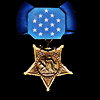 Won Medal of Honor, shot down 34 Japanese aircraft
Won Medal of Honor, shot down 34 Japanese aircraft
Commander - Air Group Fifteen (CAG-15) on USS Essex, Hellcat pilot
Cdr. David McCampbell - Top Navy Ace
Photo 01: McCampbell in cockpit of Hellcat
Captain McCampbell is the Navy's all-time leading ace with 34 aerial victories during World War II. David McCampbell was born in Bessemer, Alabama, on January 16, 1910 and raised in West Palm Beach Florida.. this Bessemer Alabama native's naval career began with dismissal. Graduating from the U.S. Naval Academy in depression-era 1933, he was rewarded with an honorable discharge from a Navy without funds. But in June 1934 McCampbell was called back and commissioned. In 1936 his first assignment involving aircraft was gunnery observer aboard USS Portland. In 1937, McCampbell's flying career finally got off the ground at Pensacola Naval Air Station where he reported for flight training. A year later, he was designated a Naval Aviator and received his first flying assignment with Fighting Squadron 4 aboard the USS Ranger, CV-4 where he served two years. He attended Staunton (Virginia) Military Academy and one year at Georgia School of Technology before his appointment to the United States Naval Academy, where he graduated with the class of 1933.
From September 1943 to September 1944 Captain McCampbell was commander of Air Group 15, in charge of fighters, bombers, and torpedo bombers aboard the aircraft carrier ESSEX. From April to November 1944, his group saw six months of continuous combat and participated in two major air-sea battles, the First and Second Battles of the Philippine Sea. During the more than 20,000 hours of air combat operations before it returned to the United States for a rest period, Air Group 15 destroyed more enemy planes (315 airborne and 348 on the ground) and sank more enemy shipping than any other Air Group in the Pacific War. Air Group 15's attacks on the Japanese in the Marianas and at Iwo Jima, Formosa, and Okinawa were key to the success of the “island hopping” campaign.
In addition to his duties as commander of the “Fabled Fifteen,” Captain McCampbell became the Navy's “Ace of Aces” during the missions he flew in 1944. In October 1944 Captain McCampbell and his wingman attacked a Japanese force of 60 aircraft. During the mission, Captain McCampbell shot down nine enemy planes, setting a single mission aerial combat record. When he landed his Grumman F6F Hellcat, his six machine guns had two rounds remaining and the plane had only enough fuel to keep it aloft for 10 more minutes. Captain McCampbell received the Medal of Honor for that action, becoming the only fast carrier task force pilot to do so. During a similarly courageous mission in June 1944, Air Group 15's planes routed a large enemy force and Captain McCampbell earned seven kills.
For his brilliant record in command of Air Group 15, Captain McCampbell was awarded the Medal of Honor, the Navy Cross, the Silver Star Medal, Legion of Merit with Combat “V”, the Distinguished Flying Cross with two Gold Stars in lieu of the second and third awards, and the Air Medal. After the war, his assignments included command of the carrier BON HOMME RICHARD and service as plans division chief of the Joint Chiefs of Staff. He retired from active duty in 1964 and was interred at Arlington National Cemetery after his death on June 30, 1996.
'All available fighter pilots! Man your planes!' boomed the squawk box in Essex' ready room. The ship's radar had detected three large groups of Japanese planes coming in.
David McCampbell, the CAG and the Navy's most famous living aviator, considered this announcement. Earlier that morning, Admiral Sherman himself had forbidden McCampbell from joining a dawn sortie. Given his responsibilities as Commander of Essex' Air Group and his public prominence as a top ace, McCampbell was too valuable. He decided that he was indeed 'available' and headed for his airplane, Minsi III. His plane crew hurried to fuel Minsi III, which had not been scheduled to fly that day. With the Hellcat only partially fueled, the Flight Officer ordered it off the flight deck - either into the air or below to the hangar deck. McCampbell went up, leading Essex's last seven fighters toward the Jap strike force.
He and Ens. Roy Rushing got out in front of the other Hellcats, putting on all speed to intercept the Japs, then only 22 miles away. He directed the other F6F's to get the bombers, while he and Rushing tackled the fighters. Surprisingly, the enemy fighters turned, allowing McCampbell and Rushing to gain altitude and a position behind them.
Seeing over 40 Japanese fighters, McCampbell radioed back to the carrier for help. 'Sorry, none available.' The enemy planes spread out in a typical formation of three V's. McCampbell picked out a Zero on the extreme right and flamed it. Rushing also got one on this first pass. Incredibly, there was no reaction from the Japs as they climbed back up to regain altitude. The two Hellcat pilots dived back down on their quarry for another pass; McCampbell blew up a second Zero. Now the gaggle of Zeros, Tonys, Hamps, and Oscars reacted - by going into a Lufbery! McCampbell made a couple of head-on passes against the formation, but without results.
A strange interlude ensued as McCampbell and Rushing climbed back up and circled, while the Japanese fighters continued to circle below. McCampbell radioed again for help; one of the Hellcats that had been going after the bombers headed his way. The Lufbery broke up and the planes headed toward Luzon in a wide Vee. The two American fliers closed in again on the formation. McCampbell opened up at 900 feet, and exploded his third plane of the morning. Rushing shot down his second one.
Apparently low on fuel, the Japanese planes doggedly flew on, maintaining formation. On his next firing pass, gunfire coming from behind forced McCampbell to break off his attack and pull up. It was another Hellcat shooting too close to him. A few choice words straightened things out. Still the enemy planes didn't turn and mix it up.
McCampbell realized he could relax and take his time. This was practically gunnery exercise. He could focus on identifying his targets carefully. The next one was an Oscar. Again his six fifties roared anad blasted the Oscar's wing root. It flamed for number four. Rushing had scored his third by this time. This continued for several more passes until McCampbell had downed 7 and Rushing 6. Rushing radioed that he was out of ammo, but he would stay on McCampbell's wing while the CAG used up his remaining bullets.
Two more passes and two more kills. As the Jap planes approached the security of their bases on Luzon, the two Americans' low fuel finally ended the slaughter. The Hellcats broke off and headed for Essex. In one morning sortie, McCampbell had shot down nine enemy planes and Rushing six, an unparalleled achievement in American fighter aviation.
Wasp was home from 1940 until she went to the bottom in 1942. During that time were two hot runs to the Mediterranean delivering Spitfires to Malta and support to the Guadalcanal campaign.
After Wasp was sunk on Sept. 15, 1942 by a Japanese submarine, McCampbell returned to the States to fit out a new squadron, Air Group 15, aka 'The Fabled Fifteen.' In February 1943 through early 1944 the group was aboard Essex steaming into history. One of the first squadrons to equip with Grumman's new F6F Hellcats, they saw action in attacks on Iwo Jima, Buy 'Hellcat Aces of World War 2' at Formosa, the Marianas, Palau, Philippines, Nansei, Shotos and climaxed with the Battle of the Philippine Sea (Marianas Turkey Shoot).
Barrett Tillman, in Hellcat Aces of World War 2, describes the introduction of the Hellcat to the Navy's carriers in the Pacific, and the immediate impact it had. Like all of Osprey's Aircraft of the Aces series, it's a great reference. The cover depicts McCampbell in his Hellcat, Minsi.
In February 1944, he was promoted to CAG (Commander - Air Group) of Air Group Fifteen. That spring, they went to war aboard USS Essex CV-9. McCampbell commanded the entire Essex air group -- bombers, fighters, and torpedo planes. He was thirty-four years old. During their tour of approximately seven months and more than 20,000 hours of operations, this group destroyed more enemy planes (318 airborne and 348 on the ground) and sank more enemy ships (296,500 tons sunk, and more than a half million tons damaged and/or probably sunk) than any other air group in the Pacific war. Among the major combat ships sunk was the Japanese battleship Musashi, three carriers and a heavy cruiser. The Fabled Fifteen became one of the most highly decorated air groups of the war.
McCampbell entered combat on May 19, 1944, leading a fighter sweep over Marcus Island. Three weeks later on June 11, flying near Saipan, he saw a lone Zero come out of the clouds. He turned towards the plane and fired three bursts. The Zero went down streaming smoke, the first in long series of successes for the CAG. He reacted coolly to his first aerial victory, 'I knew I could shoot him down and I did. That's all there was to it.'
Marianas Turkey Shoot
As the Americans prepared for the invasion of Guam and Saipan, the Carrier Task Force steamed west into the Philippine Sea. The desperate Japanese battle plan called for them to launch their strike planes at the U.S. ships, then refuel & re-arm on the Guam and Saipan airfields and hit the American carriers again in a 'shuttle' operation. It didn't turn out that way.
On June 19, the Japanese launched two large raids of Judys and Vals, escorted by fighters. Other carrier air groups took care of the first raid; Essex' Fabled Fifteen, under McCampbell went after the second group of eighty planes. McCampbell started the slaughter at 11:39 by exploding the first Aichi D4Y2 'Judy' dive bomber he spotted. As he darted across to the other side of the enemy formation, evading a gantlet of return fire, McCampbell quickly splashed a second Judy, sped toward the front of the enemy formation to record a 'probable' on a third, dispatched the formation leader's left wingman with a staccato burst, downed the leader with a steady stream of machine-gun bullets, then scored a final kill on a diving enemy craft. In minutes McCampbell had logged five kills and one probable.
There was a second air battle in the afternoon. After shooting down yet another Zero (his sixth for the day!), he became separated from his flight of eight and was returning alone to his carrier, the USS Essex. As his Hellcat cruised at 6,000 feet past Guam's Orote Peninsula, he spotted two Zeros attacking a Navy S0C seaplane picking up a downed pilot in the water. Diving to the attack, McCampbell shot down one of the two Zeros. Lt. Commander George Duncan, another VF-15 pilot, came upon the scene at that time and got the other. It was McCampbell's seventh for the day and his ninth in eight days of combat.
During the September 12-13 strikes on the Philippines, He shot down five more planes, and learned about the capabilities of the 'Nate' - a small, open-cockpit monoplane, slow and lightly armed, but highly maneuverable, advanced trainer. McCampbell had bagged two Zeros early in the day, and was heading alone toward a rendezvous when a Nate attacked him from above. It pulled out of gun range without damaging McCampbell's Hellcat, but McCampbell wanted the kill. He dropped his belly tank and put on full WEP, but kept losing ground. The Nate's student-pilot saw his advantage and began an overhead pass; but McCampbell dove for the deck. In his after-action report he noted '1) Nate is even more maneuverable than Zeke. 2) Nate can out-climb F6F at 110-120 knots airspeed. 3) This 'operational student', if he was usch, will have no trouble completing the course.' By the end of September 1944, McCampbell had shot down nineteen Japanese planes.
On October 24, during the Battle of Leyte Gulf, McCampbell, assisted only by Roy Rushing, broke up a large group of Japanese planes headed for Essex, as described above.
In one combat tour, David McCampbell shot down 34 Japanese aircraft. If he had served a second tour, he may very well have exceeded Dick Bong's total of 40. In recognition of his spectacular accomplishments: leading 'Fabled Fifteen,' personally accounting for 34 planes, and for his mission on October 24, McCampbell received the Congressional Medal of Honor, presented to him by President Roosevelt.
McCampbell also received the Navy Cross, the Silver Star Medal, Legion of Merit, and the Distinguished Flying Cross. After the war, McCampbell served in the Navy until his retirement in 1964. Married four times, David McCampbell must have had quite an eye for the ladies. He died in Florida after a lengthy illness on June 30, 1996.
USN Top Fighter Pilot by Squadron and Leading Commanding Officer including Unit Total Kills Squadron # Nickname Start End A/C Carrier/Base Top Ace (kills w/ sqn) CO (kills w/ sqn) Kills # Aces VF-1 High Hatters Nov-43 Aug-44 F6F Yorktown CV-10 Richard Eastmond (9) B.M. Strean 100 3 VF-2 Rippers Mar-44 Sep-44 F6F Hornet CV-12 Cdr. William A. Dean (10) 240 28 VF-3 Felix the Cat Dec-41 May-42 F4F Lexington CV-2 Butch O'Hare (5) Jimmy Thach 18 1 May-42 Jun-42 F4F Yorktown CV-5 Elbert McCuskey (5) Jimmy Thach 34.5 1 VF-5 Aug-42 Oct-42 F4F Saratoga CV-3 H. M. Jensen (7) Leroy Simpler 78 4 Oct-43 Apr-44 F6F Yorktown CV-10 Robert Duncan (7) Ed Owens (5) 93.5 7 VF-6 Shooting Stars Dec-41 Oct-42 F4F Enterprise CV-6 Donald E. Runyon (8) James S. Gray 63 1 VF-6 Aug-43 Feb-44 F6F various CV's Alexander Vraciu (9) H.W. Harrison 37.5 0 VF-7 Sep-44 Jan-45 F6F Hancock CV-19 Lt. Cdr. L. J. Check (10) 72 2 VF-8 Dec-41 Jun-42 F4F Hornet CV-8 Merrill Cook (2) Sam Mitchell 5 0 Mar-44 Oct-44 F6F Bunker Hill CV-17 Cdr. William Collins (9) 156 13 VF-9 Cat o' Nines Oct-43 Mar-44 F6F Essex CV-9 Hamilton McWhorter (10) Phil Torrey 116 10 est. Mar-45 Jun-45 F6F Yorktown CV-10 Eugene Valencia (23) John S. Kitten 129 10 est. VF-10 Grim Reapers Oct-42 May-43 F4F Enterprise CV-6 Swede Vejtasa (7.25) J.H. Flatley 43 1 Jan-44 Jun-44 F6F Enterprise CV-6 Richard Devine (8) William Kane 88 5 Feb-45 Apr-45 F4U Intrepid CV-11 P. L. Kirkwood (8) Walter E. Clarke 87 7 VF-11 Sundowners May-43 Jul-43 F4F Guadalcanal Charles Stimpson (6) Charles White 52 2 Oct-44 Jan-45 F6F Hornet CV-12 Charles Stimpson (10) E. G. Fairfax 106 5 VF-12 Sep-43 Jun-44 F6F Saratoga CV-3 John Magda (4) R.G. Dose 20 0 Jan-45 Jun-45 F6F Randolph CV-15 Lt. Cdr. Frederick H. Michaelis (5) 51 2 VF-13 Black Cats Jul-44 Nov-44 F6F Franklin CV-13 Albert Pope (7) Wilson Coleman (6) 86 3 VF-14 Iron Angels May-44 Nov-44 F6F Wasp CV-18 William Knight (7.5) R. Gray 146 8 VF-15 Fighting Aces May-44 Nov-44 F6F Essex CV-9 McCampbell, Duncan, Rushing, Strane, Twelves James Rigg (11) 310 26 VF-16 Fighting Airedales Oct-43 Jun-44 F6F Lexington CV-16 Alexander Vraciu (10) Paul D. Buie (9) 136.5 7 VF-17 Jolly Rogers Oct-43 Mar-44 F4U Solomons Ike Kepford (16) Tom Blackburn (11) 152 11 VF-18 Oct-43 Mar-44 F6F Bunker Hill CV-17 Lt. Cdr. Sam Silber (6) 74 1 Aug-44 Nov-44 F6F Intrepid CV-11 Cecil Harris (22) Ed Murphy 176.5 13 VF-19 Satan's Kittens Jul-44 Nov-44 F6F Lexington CV-16 William Masoner Jr. (10) T. Hugh Winters (8) 155 11 VF-20 Aug-44 Jan-45 F6F Enterprise CV-6/etc. Douglas Baker (16.33) Fred Bakutis (7.5) 158 9 VF-21 Feb-43 Jul-43 F4F Guadalcanal Ross Torkelson (6) John Hulme 69 3 Jul-44 Oct-44 F6F Belleau Wood CVL-24 Bob Thomas (5) V. F. Casey 40 1 VF-22 Sep-44 Jan-45 F6F Cowpens CVL-25 Clement Craig (12) Thomas Jenkins 49.5 3 VF-23 Aug-43 May-44 F6F Princeton CVL-23 L.H. Kerr (4.83) H.L. Miller 35 0 VF-26 Apr-44 Oct-44 FM2 Santee CVE-29 Kenneth Hippe (6) Harold Funk 31 1 VC-27 Oct-44 Jan-45 FM2 Savo Island Ralph Elliott (9) P. W. Jackson 61 1 VF-27 May-44 Oct-44 F6F Princeton CVL-23 James Shirley (12) Fred Bardshar (7.5) 134 10 VF-28 May-44 Dec-44 F6F Monterey CVL-26 Oscar Bailey (5) Roger Mehle 55 2 VF-29 Oct-44 Apr-45 F6F Cabot CVL-28 Robert Murray (10.3) William Eder (6.5) 113 12 VF-30 Jan-45 Jun-45 F6F Belleau Wood CVL-24 James Reber (11) Douglas A. Clark 110 7 VF-31 Meat Axers Jan-44 Sep-44 F6F Cabot CVL-28 Cornelius Nooy (19) Bob Winston 165.5 14 VF-32 Outlaw's Bandits Mar-44 Oct-44 F6F Langley CVL-27 Lt. Cdr. Eddie Outlaw (6) 44 2 VF-33 Aug-43 Jan-44 F6F Solomons Frank Schneider (7) Hawley Russell 74.5 3 VF(N)-41 Aug-44 Jan-45 F6F Independence CVL-23 William Henry (9.5) T. F. Caldwell 46 2 VF-42 Dec-41 May-42 F4F Yorktown CV-5 Art Brassfield (4.83) Oscar Pedersen 25 0 VF-44 Crusaders Oct-44 Feb-45 F6F Langley CVL-27 Cdr. Malcolm T. Wordell (7) 47 3 VF-45 Nov-44 May-45 F6F San Jacinto CVL-30 James B. Cain (8) Gordon Schechter 81.5 6 VF-47 Fighting Cocks Mar-45 Aug-45 F6F Bataan CVL-29 Samuel Hibbard (7.33) Albert Clancy 67.5 1 VF-50 Devil Cats Apr-44 Jul-44 F6F Bataan CVL-29 Daniel Rehm (6) J.C. Strange 61 4 VF-51 Apr-44 Nov-44 F6F San Jacinto CVL-30 William Maxwell (7) C. L. Moore 50.5 1 VF-60 Nov-43 Oct-44 F6F Suwanee CVE-27 R. Singleton (3.25) H.O. Feilbach 25 0 VF-72 Jul-42 Oct-42 F4F Hornet CV-8 George Wrenn (5.25) Henry Sanchez 38 1 VF-80 Vorse's Vipers Nov-44 Jan-45 F6F Ticonderoga CV-14 Patrick Fleming (19) Leroy Keith 159.5 10 VF-82 Jan-45 Jun-45 F6F Bennington CV-20 Robert Jennings (7) Edward Hassell 85 5 VF-83 Kangaroos Mar-45 Sep-45 F6F Essex CV-9 Thaddeus Coleman (8) H.A. Sampson 137 11 VBF-83 Mar-45 Sep-45 F4U Essex CV-9 Thomas Reidy (10) Frank Patriarca 91 3 VF-84 Wolf Gang Jan-45 Jun-45 F4U Bunker Hill CV-17 Doris Freeman (7) Roger R. Hedrick 137 4 Major US Navy Historical Timeline for World War II.
Dec. 7, 1941 - Carrier aircraft of the Japanese Imperial Navy launched a devastating attack on Pearl Harbor and on the military and air installations in the area. The three aircraft carriers of the Pacific Fleet were not present. USS Saratoga (CV 3), just out of overhaul, was moored at San Diego. USS Lexington (CV 2) was at sea about 425 miles southeast of Midway toward which she was headed to deliver a Marine Scout Bombing Squadron. USS Enterprise (CV 6) was also at sea, about 200 miles west of Pearl Harbor, returning from Wake Island where she had delivered a Marine Fighter Squadron. Her Scouting Squadron, launched early in the morning and headed to Ewa Airfield, arrived over Pearl Harbor during the attack and immediately went into action in defense of the naval base. The carrier, meanwhile, launched her remaining aircraft in a fruitless search for the Japanese striking force. She put into Pearl Harbor on Dec. 8 for fuel and supplies and sailed early the next morning to patrol against possible additional attacks on the Hawaiian Islands. While the group did not encounter any surface ships, Enterprise aircraft sunk the submarine I-170 on 10 Dec. This submarine was one of those used to scout the Hawaiian area in conjunction with the attack and was the first Japanese combatant sunk in World War II by U.S. aircraft.
Feb. 1, 1942 - Task Forces 8 (under Vice Adm. William F. Halsey) and 17 (under Rear Adm. Frank J. Fletcher, built around the carriers Enterprise and Yorktown, attacked the Japanese installations on the islands of Wotje, Kwajalein, Jaluit, Makin, and Mili in the Marshall and Gilbert Islands. This was the first U.S. aircraft carrier offensive.
Feb. 27, 1942 - Early in the morning, USS Langley (AV 3) rendezvoused with her antisubmarine screen, USS Whipple (DD 217) and USS Edsall (DD 219) near Tjilatjap, Java. At 1140, nine twin-engine Japanese bombers attacked her. The first and second strikes were unsuccessful, but during the third strike, Langley took five hits. Aircraft topside burst into flames, steering was impaired, and the ship took a 10 degree list to port. Unable to negotiate the narrow mouth of Tjilajap Harbor, Langley went dead in the water as inrushing water flooded her main engines. At 1332, the crew was order to abandon ship, and shortly after all were clear, the two destroyers fired 4-inch shells and two torpedoes into her and she sunk about 75 miles south of Tjilatjap. Sixteen crew were lost.
Apr. 18, 1942 - Army Lieutenant Colonel James H. Doolittle, taking off from USS Hornet (CV 8), Capt. Marc A. Mitscher commanding, bombed Tokyo, the first American air strike against the Japanese homeland.
The plan had called for USS Enterprise (CV 6) to provide air combat cover while Hornet was to steam to where Col. Doolittle would lead the B-25s in the strike on Tokyo and other important Japanese cities. Originally, the task force intended to proceed to within 400 miles of the Japanese coast; however, on the morning of 18 April a Japanese patrol boat, No. 23 Nitto Maru, sighted Hornet. The patrol boat informed the Japanese of the presence and location of the American task force before the cruiser USS Nashville (CL 43) sank the craft. Though some 600 miles from the Japanese coast, confirmation of the patrol boat's warning prompted Adm. William F. Halsey at 0800 to order the immediate launching of the 'Tokyo Raiders.'
As Hornet swung about and prepared to launch the bombers which had been readied for take-off the previous day, a gale of more than 40 knots churned the sea with 30-foot crests; heavy swells, which caused the ship to pitch violently, shipped sea and spray over the bow, wet the flight deck and drenched the deck crews. The lead plane, commanded by Colonel Doolittle, had but 467 feet of flight deck while the last B-25 hung far out over the fantail.
The first of the heavily-laden bombers lumbered down the flight deck, circled Hornet after take-off, and set course for Japan. By 0920 all 16 of the bombers were airborne. Hornet brought her own planes up to the flight deck and steamed at full speed for Pearl Harbor. Intercepted broadcasts, both in Japanese and English, confirmed at 1446 the success of the raids. Exactly one week to the hour after launching the B-25s, Hornet sailed into Pearl Harbor. Hornet's mission was kept an official secret for a year; until then President Roosevelt referred to the origin of the Tokyo raid only as 'Shangri-La.'
May 4-8, 1942 - The Battle of the Coral Sea. In the first naval engagement of history fought without the opposing ships making contact, U.S. carrier forces stopped a Japanese attempt to land at Port Moresby by turning back the covering carrier force. In the battle, the Japanese lost the light carrier Shoho and the U.S. lost the carrier, USS Lexington (CV 2).
Task Force 17 (Rear Adm. Fletcher) with the carrier USS Yorktown (CV 5), bombed Japanese transports engaged in landing troops in Tulagi Harbor, damaging several and sinking one destroyer. They then joined the other Allied naval units, including Task Force 11 (Rear Adm. Aubrey W. Fitch) with USS Lexington (CV 2). On 7 May, carrier aircraft located and sank the light carrier Shoho.
The next day, the Japanese covering force was located and attacked by air, resulting in the damage of the carrier Shokaku. Simultaneously, the Japanese attacked task Force 17, scoring hits on Yorktown. Lexington was struck by a torpedo to port. Seconds later, a second torpedo hit to port directly abreast the bridge. At the same time, she took three bomb hits from enemy dive bombers, producing a 7 degree list to port and several raging fires. By 1300 her skilled damage control parties had brought the fires under control and returned the ship to even keel; making 25 knots, she was ready to recover her air group. Then suddenly Lexington was shaken by a tremendous explosion, caused by the ignition of gasoline vapors below, and again fire raged out of control.
At 1558 Capt. Frederick C. Sherman, fearing for the safety of men working below, secured salvage operations, and ordered all hands to the flight deck. At 1707, he ordered, 'abandon ship!', and the men began going over the side into the warm water, almost immediately to be picked up by nearby cruisers and destroyers. Adm. Fitch and his staff transferred to the cruiser USS Minneapolis (CA 36); Capt. Sherman and his executive officer, Cmdr. M. T. Seligman insured all their men were safe, then were the last to leave their ship.
Jun. 3-6, 1942 - The Battle of Midway. A strong Japanese thrust in the central Pacific to occupy Midway Island was led by a four-carrier Mobile Force, supported by heavy units of the Japanese First Fleet, and covered by a diversionary carrier raid on Dutch Harbor in the Aleutian Islands of Alaska. The Japanese attack on Midway was met by a greatly outnumbered U.S. carrier force composed of task Force 17 (Rear Adm. Fletcher) with USS Yorktown (CV 5) and Task Force 16 (Rear Adm. Raymond A. Spruance) with USS Hornet (CV 8) and USS Enterprise (CV 6).
Early in the morning of 4 June, the Japanese sent their torpedo, horizontal and dive bombers against targets on Midway. Hornet, Yorktown, and Enterprise launched strikes as the Japanese carriers struck their planes below to prepare for a second strike on Midway. Hornet's dive bombers missed contact, but 15 planes comprising her Torpedo Squadron 8 found the enemy and pressed home their attacks. They were met by overwhelming fighter opposition about 8 miles from three enemy carriers and followed all the way in to be shot down one by one.
Ens. George H. Gay, USNR, the only surviving pilot, reached the surface as his plane sunk. He hid under a rubber seat cushion to avoid strafing and witness the greatest carrier battle in history. Of 41 torpedo planes launched by the American carriers, only six returned. Their sacrifices drew enemy fighters away from dive bombers of Enterprise and Yorktown which sank three of the four Japanese carriers (Akagi, Kaga, and Soryu) with an assist from submarine USS Nautilus (SS 168). The fourth Japanese carrier, Hiryu, was sunk the following day.
On June 6, 1942, USS Yorktown (CV 5) was attacked by Japanese 'Vals' and 'Zeros'. Intense antiaircraft fire greeted these planes as they approached Yorktown but three 'Val' divebombers scored hits, each sending a bomb into the carrier. One bomb blew a 10-sq. ft. hole in the flight deck and started fires. The second pierced the flight deck and exploded in the lower part of the funnel. The third ripped through the number one elevator and exploded on the fourth deck. Within an hour, the crew had the fires sufficiently
The fueling had just begun with the ship's radar picked up more attackers. In minutes, Japanese torpedo planes were attacking. Although the ship was maneuvering radically, two torpedoes tore into her port side and she went dead in the water, listing to port. Without power, the list worsened and all hands were order to abandon ship.
When the ship stubbornly remained afloat, a salvage party was organized to save Yorktown. Power was supplied by USS Hammann (DD 412).
Just as it looked like the Yorktown could be saved, a Japanese submarine fired four torpedoes at the carrier and her assisting destroyer. One torpedo hit Hammann directly amidship and broke her back. She jackknifed and went down rapidly. Two torpedoes hit the carrier, and moments after Hammann's stern slid beneath the waves, her depth charges exploded, killing men in the water and further damaging Yorktown. Although the carrier stayed afloat throughout the night of June 6, men on the ships nearby noted her port list increasing rapidly. At 0701, the valiant flattop rolled over on her port side and sank in 3,000 fathoms of water, her battle flags flying.
Midway was one of the decisive battles of history that had far reaching and enduring results on the Pacific War. Midway was saved as an important base for operations into the western Pacific. Likewise saved was Hawaii. Of greatest importance was the crippling of Japan's carrier strength, a severe blow from which she never fully recovered. The four large aircraft carriers sent to the bottom of the sea carried with them 258 planes along with a high percentage of Japan's most highly trained and battle-experienced carrier pilots. Midway was the turning point of the war in the Pacific.
Jun. 15, 1942 - USS Copahee (CVE 12), Cmdr. J. G. Farrell in command, commissioned at the Puget Sound Navy Yard, the first of 10 escort carriers of the Bogue class.
Aug. 12, 1942 - USS Wolverine (IX 64) commissioned at Buffalo, N.Y., Cmdr. G. R. Fairlamb, commanding. Wolverine and USS Sable (IX 81), commissioned May 1943, were Great Lakes excursion ships converted for aviation training . Sailing Lake Michigan, they provided flight decks on which hundreds of student aviators qualified for carrier landings and many flight deck crews received their first practical experience in handling aircraft aboard ship.
Aug. 20, 1942 - The designation of escort carriers was changed from AVG to ACV.
Aug. 24, 1942 - USS Santee (ACV 29), under the command of Capt. W. D. Sample, was placed in commission at the Norfolk Navy Yard, the first of four escort carriers of the Sangamon class, converted from Cimarron class fleet oilers.
Sept. 15, 1942 - The Loss of USS Wasp (CV 7). On Tuesday, 15 Sept. 1942, USS Wasp (CV 7) and USS Hornet (CV 8), along with USS North Carolina (BB 55) and 10 other warships, were escorting transports carrying the 7th Marine Regiment to Guadalcanal as reinforcements. Wasp had drawn the job of ready-duty carrier and was operating some 150 miles southeast of San Cristobal Island. The crew had been at General Quarters from an hour before sunrise to about 1000 when the morning search returned to the ship. The ship's planes were being refueled and rearmed for antisubmarine patrol missions. Afterwards, the ship went to condition 2, with the air department at flight quarters.
There was no contact with the enemy during the day, with the exception of a Japanese four-engined flying boat downed by a Wasp Wildcat at 1215.
About 1420, the carrier turned into the wind to launch eight fighters and 18 SBD-3s as well as to recover eight F4F-3s and three SBDs that had been airborne since before noon. The ship rapidly completed the recovery of the 11 planes, then turned to starboard. The air department was at flight quarters, refueling and respotting the ship's planes for the afternoon mission. Suddenly, at 1444, a look-out called out, 'three torpedoes … three points forward of the starboard beam!'
A spread of four torpedoes, fired the Japanese submarine I-19, rapidly approached the carrier. Wasp's helmsman put the ship's rudder over hard to starboard, but it was too late. Two torpedoes smashed into the ship in the vicinity of gasoline tanks and magazines.
In quick succession, fiery blasts ripped through the forward part of the ship. Aircraft on the flight and hangar decks were thrown about like toys and dropped on the deck with such force that landing gears snapped. Planes triced up in the hangar overhead fell and landed upon those on the hangar deck; fires broke out almost simultaneously in the hangar and below decks. Soon, the heat of the intense gasoline fires detonated the ready ammunition at the forward antiaircraft guns on the starboard side; and fragments showered the forward part of the ship. The number two 1.1-inch gun mount was blown overboard.
Water mains in the forward part of the ship were broken by the force of the explosions and thus were useless. There was no water available to fight the conflagration forward; and the fires continued to set off ammunition, bombs, and gasoline. As the ship listed to starboard between 10 and 15 degrees, oil and gasoline, released from the tanks by the torpedo hit, caught fire on the water.
Wasp's skipper, Capt. Forrest P. Sherman, slowed to 10 knots, ordering the rudder put to port to try to get the wind on the starboard bow; he then went astern with right rudder until the wind was on the starboard quarter, in an attempt to keep the fire forward. At that point, some flames made central station untenable, and communication circuits went dead. Soon, a serious gasoline fire broke out in the forward portion of the hangar, and, within 24 minutes of the initial attack, three additional major gasoline vapor explosions occurred.
Capt. Sherman consulted with his executive officer, Cmdr. Fred C. Dickey. The two men saw no course but to abandon ship, as all fire-fighting was proving ineffectual. The survivors would have to be gotten off quickly to prevent unnecessary loss of life.
Reluctantly, after consulting with Rear Adm. Leigh Noyes, Capt. Sherman ordered 'abandon ship' at 1520. All badly injured men were lowered into rafts or rubber boats. Many unwounded men had to abandon the ship from aft because the forward fires were burning with such intensity.
The departure, as Capt. Sherman observed it, looked 'orderly', and there was no panic. The only delays occurred when many men showed reluctance to leave until all the wounded had been taken off. The abandonment took nearly 40 minutes; and at 1600 — satisfied that no one was left on deck, in the galleries, or in the hangar aft — Capt. Sherman swung over the lifeline on the fantail and slid into the sea.
USS Laffey (DD 459), USS Lansdowne (DD 486), USS Helena (CL 50), and USS Salt Lake City(CL 25) rescued 1,946 men. There were 193 killed and 366 wounded.
The fires continued to spread through the abandoned ship, traveling aft. Four more violent explosions erupted as night began to fall. USS Lansdowne was directed to sink the burning hulk, and she fired five torpedoes into the dying ship's hull. Three hits, yet Wasp remained afloat. By now, the flames had enveloped the stern. The carrier literally floated in a burning pool of gasoline and oil.
Finally, at 2100, Wasp sank by the bow.
Oct. 26, 1942 - The Battle of the Santa Cruz Islands resulted in a tactical victory for Japan, but a strategic one for the U.S. in that Japan was unable to dislodge American forces off Guadalcanal. While the Japanese suffer no losses, USS Hornet (CV 8) was sunk. That morning USS Enterprise (CV 6) planes bombed the Japanese carrier Zuiho. Planes from USS Hornet (CV 8) severely damaged the carrier Shokaku, and the cruiser Chikuma. Two other cruisers were also attacked by Hornet aircraft. Meanwhile, Hornet, herself, was fighting off a coordinated dive bombing and torpedo plane attack which left her so severely damaged that she had to be abandoned. Commented one sailor, awaiting rescue, when asked if he planned to re-enlist, 'Damn it, yes ... on the new Hornet!' The abandoned Hornet, ablaze from stem to stern, was still afloat after receiving nine torpedoes and more than 400 rounds of 5-inch shellfire from destroyers USS Mustin (DD 413) and USS Anderson (DD 411). The two destroyers had to retire from the scene upon the arrival Japanese destroyers. The Japanese administered the coup de grâce to Hornet by firing four 24-inch torpedoes at her blazing hull, sending her to the bottom at 0135, 27 Oct. 1942, off the Santa Cruz Islands.
Dec. 31, 1942 - USS Essex (CV 9), Capt. D. B. Duncan commanding, was placed in commission in Norfolk, Va., the first of 17 ships of her class commissioned during World War II.
Jan. 14, 1943 - USS Independence (CVL 22), begun as Amsterdam, (CL-59), commissioned in Philadelphia, Capt. G. R. Fairlamb, Jr., in command. The ship launched as CV 22 on 22 Aug. 1942 by New York Shipbuilding Corp., Camden, N.J. This was the first of nine light carriers of her class constructed on Cleveland class cruiser hulls.
Feb. 17, 1943 - USS Lexington (CV 16) commissioned, Capt. Felix B. Stump in command. The ship was originally laid down as Cabot 15 Jul. 1941 by Bethlehem Steel Co., Quincy, Mass., and renamed Lexington 16 Jun. 1942. She was launched 23 September 1942.
Feb. 25, 1943 - USS Princeton (CV 23) commissioned at Philadelphia, Capt. George R. Henderson, commanding. The ship was originally laid down as Tallahassee (CL 61) by the New York Shipbuilding Corp., Camden, N.J. She was reclassified as CV 23 on Feb. 16, 1942, and renamed Princeton on Mar. 31, 1942. The ship was launched Oct. 18, 1942. Following shakedown in the Caribbean, she was reclassified CVL-23 on 15 July 1943.Apr. 15, 1943 - USS Yorktown (CV 10) commissioned at the Norfolk Navy Yard, Capt. Joseph J. ('Jocko') Clark in command. The ship was laid down 1 Dec. 1941 at Newport News Shipbuilding and Drydock Co. as Bon Homme Richard. It was renamed Yorktown 16 Sept. 1942 and launched 21 Jan 1943.
Apr. 21, 1943 - Capt. Frederick M. Trapnell made a flight in the Bell XP-59A jet Airacomet at Muroc, Calif., the first jet flight by a Naval Aviator.
May 25, 1943 - USS Bunker Hill (CV 17) commissioned, Capt. J. J. Ballentine in command. The ship was launched 7 Dec. 1942 by Bethlehem Steel Co., Quincy, Mass.
May 28, 1943 - USS Cowpens (CVL 25) commissioned, Capt. R. P. McConnell in command. The ship was launched Jan. 17, 1943, by the New York Shipbuilding Corp., Camden, N.J.
Jun. 17, 1943 - USS Monterey (CV 26) commissioned, Capt. Lester T. Hundt, commanding. The ship was laid down as Dayton (CL 78) Dec. 29, 1941, by the New York Shipbuilding Corp., Camden, N.J. and was reclassified as CV 26 Mar. 27, 1942. She was launched Feb. 28, 1943.
Jul. 8, 1943 - USS Casablanca (ACV 55), first of her class and the first escort carrier designed and built as such, was placed in commission at Astoria, Ore., Capt. S. W. Callaway commanding.
Jul. 15, 1943 - New designations for carriers were established which limited the previous broadly applied CV symbol to Saratoga, Enterprise, and carriers of the Essex class, and added CVB (Aircraft Carriers, Large) for the 45,000 ton class being built and CVL (Aircraft Carriers, Small) for the 10,000 ton class built on light cruiser hulls. The same directive reclassified escort carriers as combatant ships and changed their symbol from ACV to CVE.
Jul. 24, 1943 - USS Cabot (CVL 28) commissioned, Capt. M. F. Shoeffel in command. The ship was laid down as Wilmington (CL 79). She was redesignated as CV 28 on Jun. 2, 1942, and renamed Cabot on Jun. 23. She was converted while building and was launched Apr. 4, 1943, by the New York Shipbuilding Corp., Camden, N.J.
Aug. 16, 1943 - USS Intrepid (CV 11) commissioned in Norfolk, Va., Captain Thomas L. Sprague in command. She was launched 26 Apr. 1943, by Newport News Shipbuilding & Dry Dock Co., Newport News, Va.
Aug. 18, 1943 - The Secretary of the Navy establishes the Office of the Deputy Chief of Naval Operations (Air) with Vice Adm. John S. McCain as the first DCNO(Air).
Aug. 31, 1943 - USS Langley (CVL 27) commissioned, Capt. W. M. Dillon in command. The ship was originally named Fargo (CL 85) but laid down as Crown Point (CV 27) by the New York Shipbuilding Corp., Camden, N.J. Apr. 11, 1942. The ship was launched on May 22, 1943.
Oct. 16, 1943 - The Navy accepted its first helicopter, a Sikorski YR-4B (later an HNS-1), at Bridgeport, Conn., following a 60 minute test flight by Lt. Cmdr. F.A. Erickson, USCG.
Nov. 15, 1943 - USS San Jacinto (CVL 30) commissioned, Capt. Harold Martin, commanding. The ship was laid down as Newark (CL 100) on Oct. 26, 1942, by the New York Shipbuilding Corp., Camden, N.J., and redesignated CV 30 and renamed Reprisal on Jun. 2, 1942. The ship was again renamed San Jacinto on Jan. 30, 1943, and converted while building to a light aircraft carrier. She was reclassified CVL 30.
Nov. 17, 1943 - USS Bataan (CVL 29) commissioned, Capt. V. H. Schaeffer in command. Built by the New York Shipbuilding Corp., Camden, N.J., she was originally laid down as Buffalo (CL 99) but was reclassified as CV 29 and renamed Bataan Jun. 2, 1942.
Nov. 24, 1943 - USS Wasp (CV 18) commissioned, Capt. Clifton A. F. Sprague in command. The ship was laid down as Oriskany on 18 Mar.1942 at Quincy, Mass., by the Bethlehem Steel Co.; renamed Wasp on 13 Nov. 1942; and, launched on 17 August 1943.
Nov. 29, 1943 - USS Hornet (CV 12) commissioned, Capt. Miles M. Browning in command. The ship was launched 30 Aug. 1943 by the Newport News Shipbuilding Dry Dock Co. Newport News, Va., sponsored by Mrs. Frank M. Knox, wife of the Secretary of the Navy.
Jan. 31, 1944 - USS Franklin (CV 13) commissioned in Newport News, Va., Capt. James M. Shoemaker in command. The ship was launched Oct. 14, 1943.
Apr. 15, 1944 - USS Hancock (CV 19) commissioned, Capt. Fred C. Dickey in command. The ship was originally laid down as Ticonderoga 26 Jan. 1943 by the Bethlehem Steel Co., Quincy, Mass., and renamed Hancock 1 May 1943.
May 8, 1944 - USS Ticonderoga (CV 14) commissioned at the Norfolk Navy Yard on 8 May 1944, Capt. Dixie Kiefer in command. The ship was laid down as Hancock on 1 Feb. 1943 at Newport News, Va., by the Newport News Shipbuilding and Dry Dock Co., and renamed Ticonderoga on 1 May 1943. It was launched on 7 February 1944.
May 28, 1944 - At 2013, USS Block Island (CVE 21), while engaged in hunter-killer operations near the Azores, was torpedoed by the German U-549 which had slipped undetected through her screen. The German submarine put one and perhaps two more torpedoes into the stricken carrier before being sunk itself by USS Eugene E. Elmore (DE-686) and USS Ahrens (DE-575). Block Island was the only carrier lost in the Atlantic.
Jun. 4, 1944 - USS Guadalcanal (CVE 60), under the command of Capt. Dan Gallery, while on patrol in the Atlantic off the coast of Africa, captures the German submarine U-505 with help of USS Chatelain (DE 149) and USS Pillsbury (DE 133) . It was the only submarine captured by the U.S. Navy in World War II.
Jun. 19, 1944 - The Battle of the Philippine Sea began when USS Hornet (CV 12) launched strikes to destroy as many land-based Japanese planes on Saipan as possible before the carrier-based Japanese aircraft came in. The Japanese approached the American carriers in four massive waves. But fighter aircraft from Hornet and other carriers broke up all the attacks before the Japanese reached the task force. Nearly every Japanese aircraft was shot down in what became commonly known as 'The Marianas Turkey Shoot.' Only 35 operational aircraft remained out of the 430 planes with which Japanese Adm. Ozawa had commenced the Battle of the Philippine Sea. U.S. air strikes also sank the Japanese carrier Hiji and so damaged two tankers that they were abandoned and scuttled.
Jun. 29, 1944 - Carrier Air Groups were standardized for all commands under the following designations: CVBG, large carrier air group; CVG, medium carrier air group; CVLG, light carrier air group; CVEG, escort carrier air group (Sangamon class); and, VC, escort carrier air group (C3 and Kaiser classes).
Aug. 6, 1944 - USS Bennington (CV 20) commissioned, Capt. J. B. Sykes in command. The ship was launched 16 Feb. 1944 by New York Navy Yard.
Sept. 15, 1944 - USS Shangri-La (CV 38) commissioned at Norfolk, Va., Capt. James D. Barner, commanding.
Oct. 9, 1944 - USS Randolph (CV 15) was commissioned in Norfolk, Va., 9 October 1944, Capt. Felix Baker in command.
Oct. 24, 1944 - USS Princeton (CVL 23) was lost in an air attack in the Sibuyan Sea during the Battle for Leyte Gulf. On the 20th, Princeton, commanded by Capt. William H. Buracker, USN, sent her planes against airfields on Luzon to prevent Japanese land based aircraft attacks on Allied shipping massed in Leyte Gulf. On the 24th, Japanese planes from Clark and Nichols Fields found Princeton and her task group.
At 9:38 a.m. on Oct. 24, 1944, a lookout aboard Princeton spotted a single Japanese plane making a shallow dive on the ship. The plane had come out of low-hanging clouds and while under fire from Princeton's guns and those of other ships in company, dropped a 500-pound bomb from under 1,200 feet. It hit forward of the after elevator and slightly to port of the center line, crashed through the flight deck and hangar, then exploded. Flames shot down to the engineering spaces aft and back into the hangar. The explosion also knocked out the after fire-fighting system. Initial fires soon expanded.
The smoke was very thick and flowed across the after part of the ship. The heat from the fires and the dense smoke forced many of the men on the stern of the ship to jump overboard.
USS Princeton on fire The first major explosions rocked the light carrier at about 10:02 a.m., engulfing the ship in more heavy billowing smoke and flame. The first blew out the after elevator; the second, shortly after the first, buckled the flight deck. The explosions also sent fragments of the ship flying in all directions, causing many casualties.
At about 10:10 a.m., USS Irwin (DD 794) went alongside the burning carrier to port. The seriously injured were lowered from the carrier onto the destroyer. Irwin continued to play hoses into the forward part of Princeton's hangar and to take aboard the carrier's crew to the point where between 600 and 700 men were packed like sardines on the small destroyer's decks.
The Task Force commander, Rear Adm. Forrest C. Sherman, seeing the heavy explosions, dispatched the cruiser USS Birmingham (CL 62) and another destroyer to the Princeton's assistance.
USS Birmingham fighting fires onboard USS Princeton At about 10:55 a.m., Birmingham came alongside the blazing Princeton. Shortly after, USS Reno (CL 96) also came alongside but could not remain due to dense smoke and the scorching heat from the fires. As the crew worked the fires toward the after part of the carrier, Birmingham shifted back there as well. By about 1 p.m., enough progress had been made so that it looked as though the fires might be out within 20 or 30 minutes.
Just as Princeton's fires were about to be extinguished, Japanese aircraft were said to be in the vicinity. Immediately, at about 1:30 pm, Birmingham pulled away to get set for a fight that didn't come. Meanwhile, with very little fire-fighting capability on the carrier, Princeton's blazes grew again.
At 3:23 p.m., as Birmingham approached Princeton for the second time, the carrier's reserve bomb and torpedo stowage blew up, blowing away part of the stern. Shrapnel from the blast ripped across Birmingham killing 229 and injuring 420, far more than those hurt on the carrier.
The injured Birmingham was obliged to back off. Princeton had no fire-fighting capability left aboard, and at 4:40 p.m., Capt. Buracker left the carrier, the last to go. A message came from Rear Adm. Sherman: 'Destroy Princeton. Remaining ships join task force.' Shortly after 5 p.m., USS Irwin began to fire torpedoes at the burning hulk.
At 5:46 p.m., USS Reno relieved Irwin and at 5:49 p.m. the carrier's torpedo warhead storage exploded. Flames and debris shot up 1000 to 2000 feet. Princeton's forward section was gone and what was left of her after section appeared momentarily through the smoke. By 5:50 p.m., she disappeared. Ten officers and 98 enlisted men had been lost, but 1,361 of her crew survived.
Included in that number was Capt. John M. Hoskins, who had been prospective commanding officer of CVL 23 and had lost his right foot with her. Despite this, Capt. Hoskins would become the first commanding officer of the fifth Princeton (CV 37).
Oct. 30, 1944 - While USS Belleau Wood (CVL 24) was patrolling with her task group east of Leyte, she shot down a Japanese suicide plane which fell on her flight deck aft causing fires which set off ammunition. Before the holocaust could be brought under control, 92 men were killed or missing.
Nov. 25, 1944 -During the battle to oust the Japanese from the Philippines, planes from USS Intrepid (CV 11), and other carriers, continued to hit airfields and shipping in the islands. On 25 Nov., two kamikaze aircraft broke through the antiaircraft fire and crashed into Intrepid. Six officers and 59 sailors were killed in the attack but Intrepid maintained station, and in less than two hours had extinguished the blaze.
Nov. 26, 1944 - USS Bon Homme Richard (CV 31) commissioned, Capt. A. O. Rule, Jr., in command. The ship was launched 29 Apr. 1944 by New York Navy Yard.
Jan. 28, 1945 - USS Antietam (CV 36) commissioned, Capt. James R. Tague in command. The ship was laid down on 15 Mar. 1943 by the Philadelphia Navy Yard and launched on 20 August.
Mar. 19, 1945 - USS Franklin (CV 13), which had maneuvered closer to the Japanese homeland than any other U.S. carrier, had launched a pre-dawn strike against the island of Honshu as well as a later strike against shipping in Kobe Harbor. Suddenly, a single Japanese plane came through the cloud cover, made a low level run on the ship and dropped two armor-piercing bombs. One struck the flight deck centerline, penetrating to the hangar deck which it devastated. The bomb also ignited fires through the second and third decks and knocked out the combat information center and air plot.
The second bomb hit aft and tore through two decks, fanning fires which detonated ammunition, bombs and rockets. Franklin, within 50 miles of the Japanese mainland, lay dead in the water, took a 13-degree starboard list, lost all radio communications and was enveloped by fire. Many of the crew were either blown overboard, driven off by fire, or killed or wounded. Remaining were 106 officers and 604 enlisted, who by sheer valor and tenacity, saved the ship. Casualties totaled 724 killed and 265 wounded. Franklin, the most heavily damaged aircraft carrier during the war, remained afloat and after a tow from USS Pittsburgh, proceeded under her own power to Pearl Harbor for repairs.
Apr. 16, 1945 - USS Boxer (CV 21) commissioned, Capt. D. F. Smith in command. It was launched 14 Dec. 1944 by Newport News Shipbuilding and Dry Dock Co., Newport News, Va.
Jun. 3, 1945 - USS Lake Champlain (CV 39) commissioned, Capt. Logan C. Ramsey, commanding. The ship was laid down at the Norfolk Naval Shipyard, Portsmouth, Va., Mar. 15, 1943.
Sept. 2, 1945 - World War II ends when representatives of Japan and the Allied Forces meet and Japan signs the instruments of surrender aboard the battleship USS Missouri (BB 63) in Tokyo Bay.
Bibliography:
- Barrett Tillman, Hellcat: The F6F in World War II, Naval Institute Press, 1979
- David McCampbell article from National Aviation Hall of Fame website
- Edward Sims, Greatest Fighter Missions, Harper and Brothers, 1962 - This sequel includes U.S. Navy and Marine Corps pilots
- Barrett Tillman, Hellcat Aces of World War 2, Osprey
Magazine References: +
- Airfix Magazines (English) - http://www.airfix.com/
- Avions (French) - http://www.aerostories.org/~aerobiblio/rubrique10.html
- FlyPast (English) - http://www.flypast.com/
- Flugzeug Publikations GmbH (German) - http://vdmedien.com/flugzeug-publikations-gmbh-hersteller_verlag-vdm-heinz-nickel-33.html
- Flugzeug Classic (German) - http://www.flugzeugclassic.de/
- Klassiker (German) - http://shop.flugrevue.de/abo/klassiker-der-luftfahrt
- Le Fana de L'Aviation (French) - http://boutique.editions-lariviere.fr/site/abonnement-le-fana-de-l-aviation-626-4-6.html
- Le Fana de L'Aviation (French) - http://www.pdfmagazines.org/tags/Le+Fana+De+L+Aviation/
- Osprey (English) - http://www.ospreypublishing.com/
- Revi Magazines (Czech) - http://www.revi.cz/
Web References: +
- History of RAF Organisation: http://www.rafweb.org
- http://en.wikipedia.org/wiki/F4U Corsair
- http://warbirdregistry.org/corsairregistry/corsairregistry.html
- Wikipedia, the free encyclopedia: http://en.wikipedia.org/
 Editor for Asisbiz: Matthew Laird Acred
Editor for Asisbiz: Matthew Laird Acred
If you love our website please add a like on facebook
Please donate so we can make this site even better !!




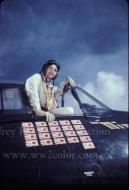



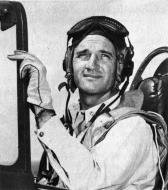
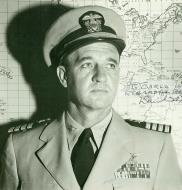
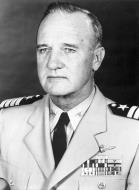




-aircraft-was-lost-in-Dec-1944-01.jpg)
